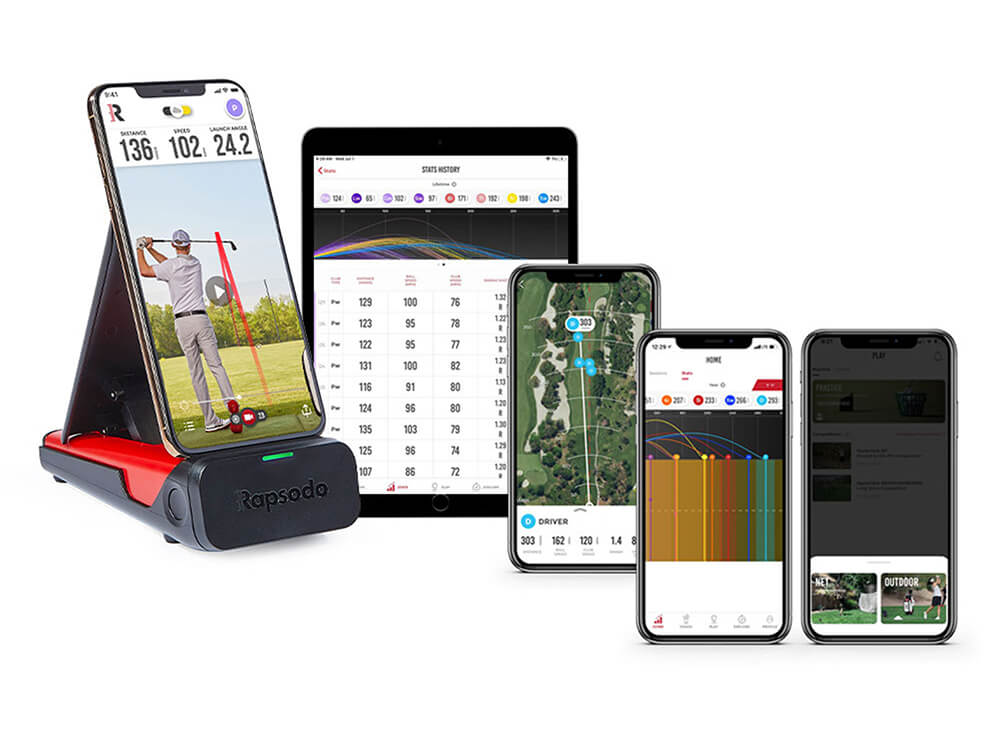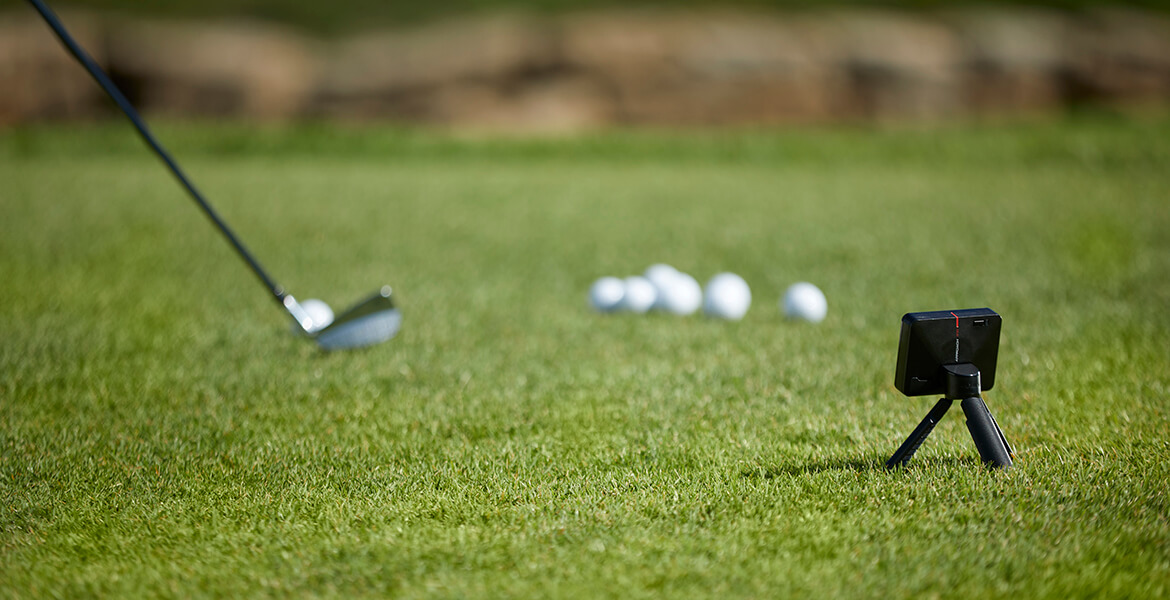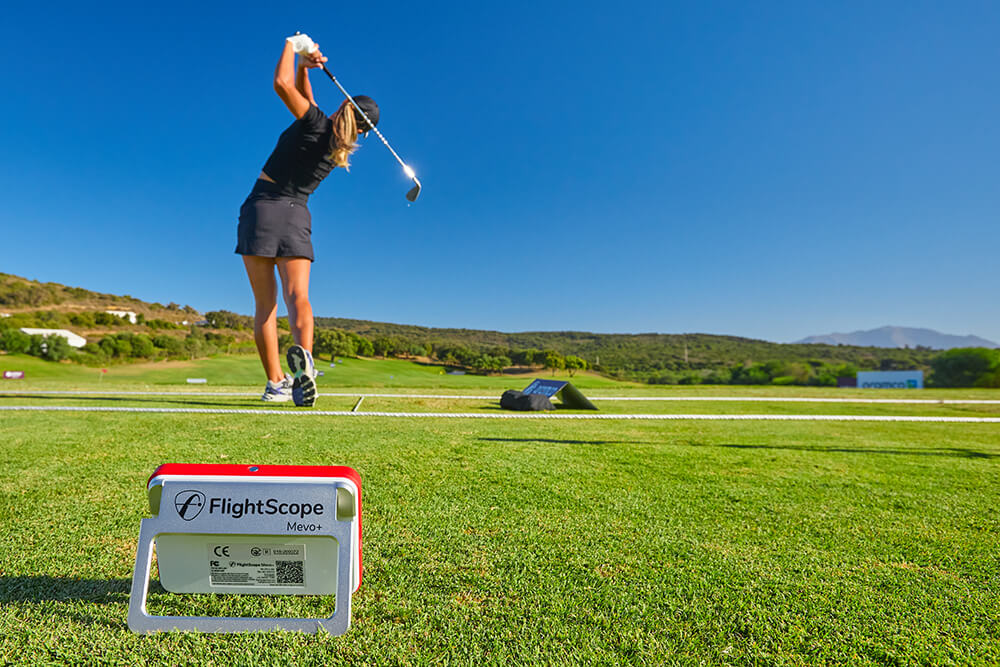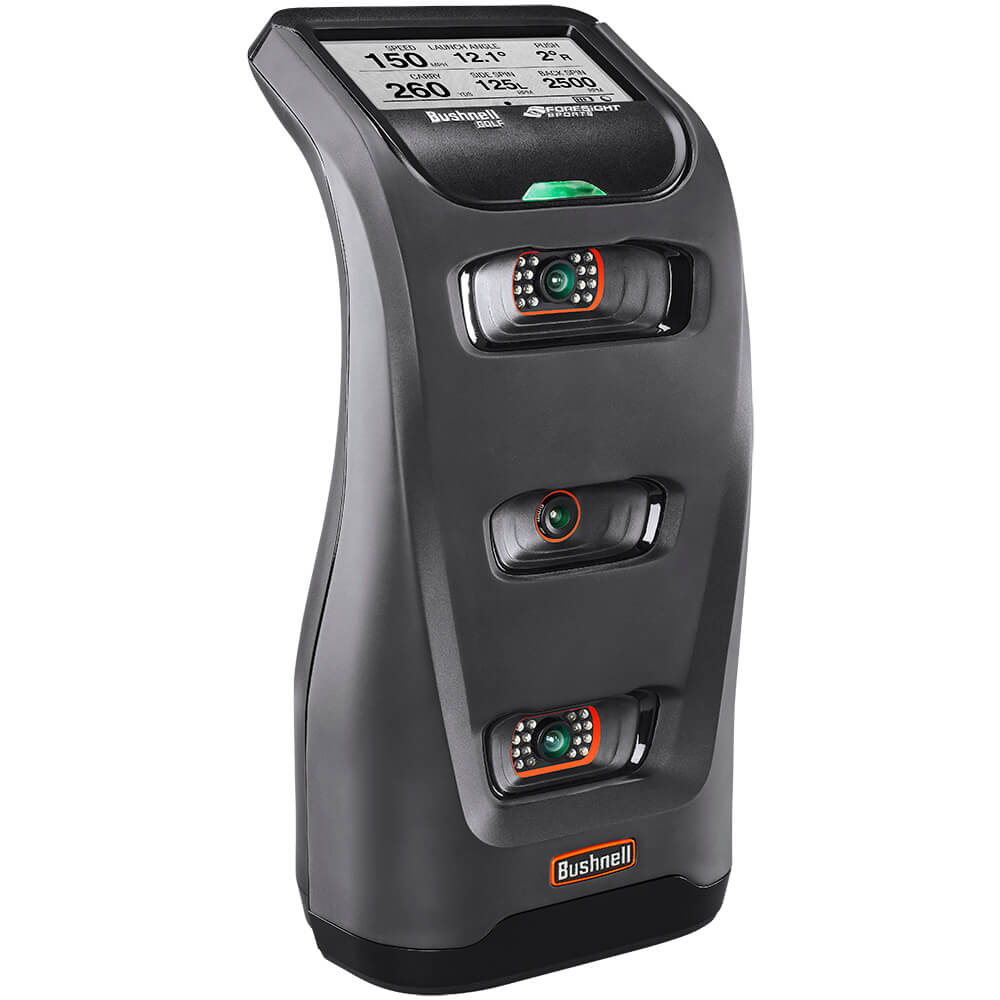It used to be that the average amateur golfer had no way of replicating the practice regimens of the world’s best professionals. To be honest, there’s still a vast chasm separating the training routines of touring pros versus weekend warriors. It’s unlikely that the average amateur can devote hours upon hours each day to work on all facets of his or her game, for example. They likely don’t have access to the same quality practice areas; they’re not blessed with an unlimited supply of premium practice balls; and the vast majority of them don’t have a top-of-the-line indoor simulator at home or a world-class artificial putting green in the backyard.
Nevertheless, average amateurs today do have access to mobile launch monitors that provide many of the same metrics to analyze individual swings and shots hit on the range. Less than a decade ago, only touring pros could afford a personal launch monitor, since the market was limited just to top-of-the-line, full-scale devices that often sported price tags exceeding $20,000. Today, pocket-sized examples can be had for as little as $400, while more advanced devices can be purchased for a few thousand dollars.
Here, we take a look at seven personal launch monitors that cover the spectrum of cost, technology, and capability. Regardless of which model you pick, your future practice sessions are destined for an upgrade.
FlightScope Mevo
Since 2004, FlightScope has created radar-assisted launch monitors for numerous sports. The company’s entry-level product for golf, the FlightScope Mevo, utilizes 3D Doppler radar technology to track eight shot metrics: carry distance, clubhead speed, smash factor, apex height, flight time, ball speed, spin rate, and vertical launch angle. The tiny device—which measures approximately 3.5 inches in length, 2.5 inches tall, and 1.5 inches deep—displays all of those shot metrics through synchronization with a smart phone or tablet app, and if users so choose, they can pair the camera on that smart phone or tablet to record videos of each swing.
https://twitter.com/FlightScopeGolf/status/1521945776091447296?s=20&t=O8b6TR5u75n9b9cEzy_4ew
I found the device to be mostly accurate from shot to shot and only occasionally failed to capture data on a swing. Given that the Mevo costs just $399, those infrequent blunders are easily taken in stride. The device’s biggest shortcoming is its inability to track shot dispersion, so players who are looking for a device that can help them dial in their accuracy may want to look elsewhere. Proper setup for the device—being positioned six to seven feet behind the hitting area—also presents some logistical challenges, especially at public ranges with elevated hitting platforms. But most personal launch monitors on the market require a similar set-up, so that’s not a knock on this particular device. – flightscopemevo.com
Rapsodo MLM
Powered by state-of-the-art radar technology and the camera on a golfer’s smartphone, the Rapsodo Mobile Launch Monitor (MLM) visually tracks the first 30 percent of a shot, then uses a combination of algorithms to project the rest of the ball’s journey. This data is then relayed in shot-tracer format with video playback of each swing, which allows almost immediate analysis along with visual feedback of the resulting shot and the physical motions of the swing that produced it. That’s all positive. The downside is that the tracking system that projects the entire shot can occasionally produce erroneous results.

Rapsodo’s MLM also utilizes satellite range mapping, which requires golfers to pinpoint their location on a range at the start of each session. This is noteworthy, since it allows the device to track the location and distance of shots hit with every club in the bag. That means that at the end of their practice sessions, golfers can review all of the shots that they hit and easily see which clubs produce the greatest dispersion (and thus need the most work).
The affiliated app with the Rapsodo MLM features a number of training programs that guide golfers into practicing with a purpose and also dialing in the weaker areas of their games. These programs include the newest “Combines,” essentially a skills test that incorporates all of the clubs in a user’s bag and can be completed in less than 20 minutes. The device, with a year’s subscription to the premium package (including the Combines program and other training aids), costs $569.98 (premium subscriptions cost $99/year thereafter). – rapsodo.com
Garmin Approach R10
Garmin may be best known for its GPS-aided rangefinders and watches, but the company has recently entered the launch monitor sector, and its first foray in that realm, the Approach R10, makes for an eye-opening introduction. Utilizing radar technology, the compact device tracks more than a dozen metrics, including club speed, club path, ball speed, launch angle, spin rate, and carry distance. That’s nothing to brag about, as every device in this story is capable of delivering those statistics; however, the Approach R10 stands out for the way in which it presents those data points. Users can customize the main screen of the affiliated app to display three data points. From there, swipes left reveal additional metrics for further analysis. This streamlined structure isn’t unique to the marketplace—the FullSwing Kit (see below) offers similar customization, but the device costs about eight times more than the Approach R10.

Garmin’s new personal launch monitor can also double as a golf simulator, allowing users to play virtual rounds on their iOS-based devices. Such a feature, which costs $9.99/month or $99/year, can make range sessions more interesting, and it has the ability to do the same thing for those winter practice sessions when golfers are relegated to hitting balls into a net in the garage or basement. If such an added feature is important to you, the Garmin Approach R10, at $599, might be the best golf purchase you’ll make all year. – garmin.com
FlightScope Mevo+
With a price tag of $1,799 plus an additional $800 for an optional pro package that provides 11 extra data categories of analysis, FlightScope’s Mevo+ represents a significant increase in cost over the three aforementioned devices. Yet, what it delivers in terms of functionality makes it a steal at that price.

With that increase cost comes a change in the overall feel of the device. The Mevo+ is heftier in size (especially when compared to the standard FlightScope Mevo), though it’s still a sleek and easily portable launch monitor. The real change in feel is less about the physical body of the device and more about what it’s capable of and how it delivers data to the golfer using it. The Mevo+ uses an entirely different app than the standard Mevo, and it’s far more advanced with a more professional aesthetic, allowing users to easily toggle different views of a single shot, as well as a group of shots, which can be organized by club to show dispersion rates and other tendencies. Those views include a shot tracer, so golfers can easily visualize the flight of the shot being analyzed. Golfers can also use their smartphone or tablet to record video footage of each swing, which is stored on the app with the shot’s corresponding data.
Like the Rapsodo MLM and Garmin Approach R10, the Mevo+ is affiliated with a Skills app (separate from the standard app that’s normally connected to the device). It’s another great way to get more out of a practice session, though it does require you to keep tabs on multiple apps to get the most out of the launch monitor. – flightscopemevo.com
SkyTrak Launch Monitor
Some personal launch monitors are designed primarily for outdoor use, but SkyTrak’s device is just the opposite. Yes, it can be brought to the range for use outside, but its photometric system may produce slightly inaccurate measurements—and therefore slightly inaccurate shot projections—if the hitting area is extremely light or dark, or if sunlight shines directly into the device’s camera lens.
That being said, SkyTrak’s launch monitor still benefits from its photometric system, which precisely calculates what the ball is doing immediately after impact. Advanced flight algorithms then take that data to simulate the flight path, distance, and shape of the shot that was hit. Displayed on a connected PC, iOS, or Android device, those shot projections also include the following data: ball speed, club head speed, launch angle, back spin, side spin, side angle (deviation from target line), carry distance, total distance, and offline distance from the target line. In particular, SkyTrak boasts that the device is especially adept at measuring side spin.
Under roof is where SkyTrak’s launch monitor truly shines. (Studies have shown that the best-performing indoor launch monitors are those that utilize photometric systems.) At $1,995, the device represents a sizeable investment; however, that’s not an exorbitant sum when you consider that the launch monitor also serves as the primary engine for any indoor simulator, should consumers want to build one. Fortunately, such an environment isn’t necessary—so long as users have a hitting mat, safety net to hit into, and enough space to comfortably swing a club (about 10 feet), they can reap all of the launch monitor’s benefits. – skytrakgolf.com
FullSwing KIT
FullSwing may be best known for its highly realistic simulator systems, but through a design collaboration with Tiger Woods, the company has entered the portable launch monitor market. The product of that partnership, the FullSwing KIT, is a highly impressive device—one that has the capability to capture 16 metric points of a swing/shot—however, when Woods first approached FullSwing about the design of such a launch monitor, his primary objective was one singular data point: carry distance.
The device is easily customized, allowing golfers to choose which metrics they want to see after every shot. In its default setting, the launch monitor will show four data points, but golfers can choose to see a singular piece of data for each swing, if that’s preferable. The user interface through the device’s app is also highly intuitive, and it’s easy for users to review additional data beyond the four (or one) primary metrics that they’ve prioritized. After each shot, the device saves high-resolution video (in slow motion) of the swing with all 16 metrics tabulated below in an easily digested format.
At $4,999, the FullSwing KIT is one of the most expensive portable/personal launch monitors on the market, but the company does offer financing options beginning at $243 per month for 24 months. If the price tag isn’t a deal-breaker—and you’re looking for a launch monitor that provides visual feedback and detailed analysis of both swing and shot (without ancillary bells & whistles like training programs and online challenges and competitions)—then this is the launch monitor for you. – fullswinggolf.com/kit-launch-monitor
Bushnell Launch Pro
If you’re familiar with Foresight Sports, you may see a lot of similarities between the Bushnell Launch Pro and Foresight’s GC3 launch monitor. Bushnell acquired Foresight Sports during the summer of 2021, so the new Launch Pro is effectively a rebranded iteration of the GC3.
There are some clear advantages and appeal of this device over the other launch monitors included in the story, the most notable of which is its orientation to the ball. Unlike the other machines mentioned in this story, which needed at least six to eight feet of space behind the ball, the Launch Pro is positioned to the side and just ahead of where the ball is being hit. This alone makes the Launch Pro a very friendly training aid, especially when practice sessions are conducted at public driving ranges.

At its base price of $3,999, the Launch Pro only provides seven measurable aspects of a swing or shot—carry distance, ball speed, total spin, horizontal launch angle, vertical launch angle, club head speed, and smash factor. That may be plenty for the average amateur, but it’s still a limited offering relative to the price. Ten additional metrics are available, all of which are included in a basic software program, which costs $249 per year after a one-year free trial.
Where the Launch Pro truly stands out is its ability to serve as the foundational piece of technology to support an at-home simulator. In that scenario, users will likely want to opt for the gold software package, which costs $699 per year and offers access to 10 playable courses. Alternatively, they could buy a permanently unlocked package ($3,499), which effectively serves as a lifetime access to the gold package. In that scenario, Bushnell’s Launch Pro suddenly becomes a $7,500 investment. For many, that’s too steep a price for a personal launch monitor, unless they have or plan to build a permanent indoor simulator at home. – bushnellgolf.com






